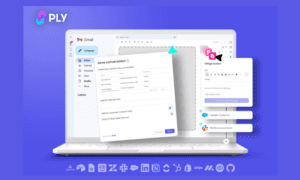Most companies have data that they don’t use effectively. Danny Bibi of AdMedia in Los Angeles, California, believes that businesses are so focused on productivity, efficiency, and profit margins that they forget to invest in relationships with their customers.
This is a mistake for many reasons: you can’t grow your customer base or increase sales without this investment. It also means you are missing out on the opportunity to create lasting impressions of your brand through targeted offers and personalized messages sent at just the right time.
These investments bring in more revenue and keep customers coming
back again and again because they feel appreciated by your business. Contextual technology offers a solution to these issues by making it easier than ever before for businesses to communicate with their clients using personalized content delivered when and where it’s most relevant.
What is Contextual Technology
Contextual technology is a term used to describe the various methods of collecting and analyzing data to determine the most relevant context for delivering content or messaging. This can be done in several ways, but the goal is always to present information useful and engaging for the customer. Danny Bibi of AdMedia feels that if you know that a customer has just viewed a product on your website, AdMedia might send them an offer for that product or a related item as they leave your site.
Advantages
Danny Bibi of AdMedia believes that one of the biggest advantages of contextual technology is that businesses can target customers based on their location. This means you can send them messages when they are near your store, for example, or when they are looking for a specific product. It also makes it possible to personalize messages based on customer preferences, which helps to create a better customer experience.
Businesses can also use contextual technology to track customer behavior to make more informed decisions about what content to present. This helps businesses understand how customers interact with their brand and what content will likely result in a sale.
What Can Contextual Technology Be Used For
Businesses can use contextual technology in nearly every industry. For example, suppose you own a restaurant. In that case, you might use contextual technology to send someone who has viewed your menu on their mobile device an offer for a free appetizer when they visit your restaurant during off-peak hours. If you run a hotel, this type of technology might let you send someone who views the rates page on your website an offer for a lower price.
Contextual technology also provides B2B interactions, partnerships, and consumer interactions. You could use it to work with partners or clients who share similar client bases to create targeted promotions and maximize revenue.
Danny Bibi, head of AdMedia, feels that companies can use contextual technology to improve customer relationships. Ultimately, the goal is to create an immersive customer experience that results in more sales and a better reputation for your business.
Contextual Advertising
Contextual Targeting Advertising is a form of online advertising that uses contextual data to target ads specifically to that user. It is a type of targeted advertising, online advertising that allows advertisers to target their ads to specific users.
The purpose of contextual targeting advertising is to place relevant ads in front of the right people at the right time. For example, if you are a business that sells cars, you might use contextual advertising to show ads for your cars to people who have recently visited automotive websites.
The way contextual targeting advertising works is by using the contextual data of the user to decide which ads to show them. This data can come from many sources, such as the user’s location, interests, or activities.
Contextual targeting advertising is often used in combination with targeted advertising. Together, they make up a form of online advertising known as programmatic advertising.
How Does Contextual Advertising Work?
Contextual advertising works by using the contextual data of the user to target ads specifically to that user. It is a type of targeted advertising, online advertising that allows advertisers to target their ads to specific users.
The purpose of contextual advertising is to place relevant ads in front of the right people at the right time. For example, if you are a business that sells cars, AdMedia might use contextual advertising to show ads for your cars to people who have recently visited automotive websites.
The way contextual advertising works is by using the contextual data of the user to decide which ads to show them. This data can come from several sources, such as the user’s location, interests, or activities.
Final Thoughts
Contextual technology is a powerful tool businesses can use to improve customer relationships. It provides opportunities for businesses to create targeted promotions and maximize revenue. Contextual advertising is a form of online advertising that uses the contextual data of the user to target ads specifically to that user. Together, they make up a form of online advertising known as programmatic advertising.
If you are looking for ways to improve your customer relationships, contextual technology, and contextual advertising may be the answer. These technologies allow businesses to target their ads to specific groups of users and place relevant ads in front of the right people at the right time. If you are not currently using these technologies, it is worth considering how they could benefit your business.

































